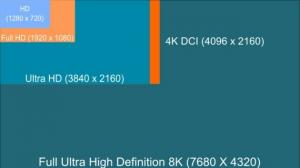Different types of software and their functions (with examples)
The software It is the set of instructions written in computer programs that represent its logical element. These instructions give the computer the ability to perform different functions.
Depending on their function, we can classify the softwares in three types: system software, application software and embedded software. Each of these, in turn, present other divisions that perform specific actions within the electronic device. Next, we explain them to you.
| Software types | Divisions | Function | Examples |
|---|---|---|---|
| System software | Boot program | Turning on the computer | BIOS |
| Operating systems | Computer and user interface | Windows |
|
| Programming software | Construction of applications by users | Compilers |
|
| Diagnostic and maintenance software | Detection of faults and malfunctions | Disk utility |
|
| Device driver (Device driver) |
Allows the function of a device when connected to the computer | Webcam Controller Printer driver Stylus driver |
|
| app software | Standard applications | Utilities of massive use | Text processors |
| Custom apps | Limited use utilities | Bank entity software | |
| Communication software | Connection between computers | Email |
|
| Integrated Software | None | Electronic equipment control | Software in televisions, video games, microwaves. |
System software
The system software includes all those programs that are used to activate and manage the internal resources of the computer. Within these software we have the following divisions:
Basic software or boot program
The basic input / output system (BIOS): basic input output system) or startup program is the first program that runs when the machine starts up. It is a system software that tests the computer's devices and loads the operating system into memory. This software is located in ROM memory. Read Only Memory).
Operating systems
Operating systems are the softwares that control the computer's resources and function as the interface between the user and the computer. Through them, the aim is to optimize the use of the processor, memory and input and output devices to allow users to manage various programs efficiently.
The operating system is tied to the capacity of the physical equipment: computer, smartphone, tablet or laptop. Among the operating systems we have as examples:
- MS / DOS (MicroSoft Disk Operating System) - Microsoft's operating system for personal computers from the early 1980s to the 20th century.
- Microsoft Windows - The most widely used operating system of all time that has evolved since 1985.
- MAC OS: Apple Macintosh operating system for your desktops and laptops.
- UNIX: multi-program and multi-user operating system.
- Linux - Public domain operating system.
- iOS: iPhone and iPad operating system.
- Android: smartphone operating system.
- Harmony OS: Huawei systems operating system.
Programming software
They are the system software programs that facilitate the construction of user applications. Within this group of software we have:
- Assemblers
- Compilers
- Bug Trackers
- File management systems
- Program Library Manager
- Terminals
Diagnostic and maintenance programs
They are the programs that are in charge of detecting faults and malfunctions of hardware and software. It is also called as Utilities or Utilities. Among these we have:
- Data compressor.
- Protection against viruses.
- Disk fragmenter.
- Airport utility.
- Disk utility.
Device drivers
Device drivers or device drivers They are classified within the system software. These programs are written to allow a device that is connected to a computer to function. Examples of these are:
- Webcam driver.
- Stylus driver.
- Printer driver.
You may be interested in knowing the difference between algorithm and program.
Application software
Application software is that program that provides instructions to perform a task that is not related to the computer's own operation. These tasks are what actually encourage widespread computer use, such as writing a text, listening to music, and calculating a company's annual budget.
Standard application software
Standard applications are software that is developed for the general public and sold in bulk. They can have different versions for different hardware platforms. Examples of standard applications are:
- Word processors: Microsoft Word, Google Docs, Apple Pages.
- Electronic spreadsheet: Microsoft Excel, Quattro Pro, Lotus.
- Database manager: MySQL, MS Acess, dBase.
- Graphics manager: Corel Draw, Paint Brush, Adope Photoshop, GIMP.
- Internet browsers: Google Chrome, Internet Explorer, Safari, Mozilla Firefox.
- Multimedia manager: Windows Media Player, VLC Media Player.
Custom application software
There are applications that are developed for a specific client, with specifications for a particular platform. For example, the software of a banking entity is tailored to the requirements of that entity.
Communication software
The communication software has the instructions that allow the exchange of information between computers. These are widely used in telecommuting, where texts, videos and conferences can be sent in real time. Examples of communication software are:
- Slack
- Zoom
- RingCentral
- GoToMeeting
- Skype
Embedded software
Embedded or embedded software is software that controls the functions of electronic equipment that is not visible to the user. The main characteristic of this software is that it is developed simultaneously with the computer. The most popular operating systems in embedded systems are Linux and Windows Embedded.
In devices such as televisions, airplanes and video games, the software is integrated. For example, the software built into a microwave is responsible for responding to the panel keys, controlling the LCD screen, and turning the elements that heat food on and off.
You may also be interested in:
- Difference between hardware and software
- Computer types
- Computer Generations
References
- Mayor Lancharro, E., García López, M. (1994) Basic Computer Science. Second edition. McGraw-Hill.
- Byeongdo Kan, Y-J. K., Lee, R.Y. (2005) A design and test technique for embedded software. Third ACIS Int'l Conference on Software Engineering Research, Management and Applications SERA'05.
- Meyers, R. TO. (2001) Encyclopedia of Physical Science and Technology-Computer Software. Elsevier.

